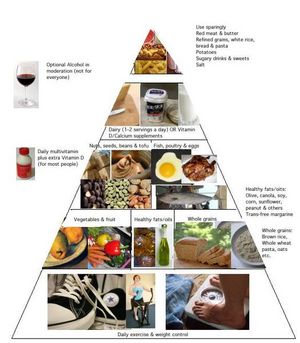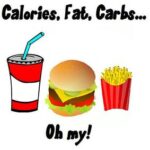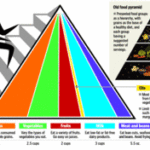Atkins Diet. The Atkins diet may have been proposed by the late Dr. Atkins in the 1970’s, but the past decade Atkins and low carbohydrate dieting reigned. When it was discovered that dieters could lose weight, much more quickly than by conventional low fat-lo calorie diets, and eat steak, bacon, and butter while doing so-they embraced it. The Atkins diet is the most strict low carbohydrate diet there is, with only a couple of grams of carbohydrates allowed during the first two weeks or the induction phase, including fruits. This went against all advice that doctors and nutritionists had ever told people to follow. The high protein, low carb diet is loaded with saturated fat (if dieters are eating red meats like the diet proposes) and got a bad wrap for this as well as side effects including bad breath and constipation due to the lack of fiber.
In 2004, Unilever unveiled a low carb version of their popular foods called “carb options” which included low carb versions of Skippy peanut butter, Wishbone salad dressing, and Ragu spaghetti sauce. More relaxed low carb diets have been introduced, allowing consumption of fruits and vegetables as well as whole grains, but Atkins is what kick started the low carb craze.
Detox Diet. Popular fasting diets were introduced in an attempt to “cleanse” the body of toxins and other impurities. The master cleanse diet, or the lemon diet became popular. This diet is a 10 days liquid cleanse where you drink only a concoction while includes lemon juice, maple syrup, and cayenne pepper. Other liquid detoxes include the Martha’s Vineyard Diet Detox and the Fruit Flush where you only drink vitamin and antioxidant fortified drinks for several days at a time. Other procedures became popular based on this theory of the body needing assistance in detoxing itself. Colonics or colonic irrigation where one forcefully empties a portion of the intestines and the colons became a procedure that people began spending as much as $150 to pay. Procedures like colonics have been called out for being unsafe, because they can lead to infection if equipment isn’t properly sterilized and they also rid the body of good bacteria in the colon and intensities. Other procedures included seaweed wraps and sitting in the sauna all in an attempt to rid the body of toxins (Potter, 2007).
Gluten Free. Gluten is a protein found in wheat, barley, and rye including hidden in many different types of sauces and marinades. Celiac disease affects 1 out of every 100 Americans and is largely undiagnosed. Gluten has been blamed for causing many different physical ailments including depression, chronic fatigue, migraines, and is especially shunned by families where a member suffers from autism. A gluten free diet is highly recommended among mothers that have children suffering from the disorder including Jenny McCarthy who has a son with autism. Many people who do not suffer from celiac disease simply say that they feel better after eliminating gluten from their diet. This type of diet is incredibly difficult to follow, however, unless you cook most of your meals. Many people have lost weight while starting on a gluten free diet, but this is mainly thought to occur due to the reduction in carbohydrates and overall calories.
GI Diet. According to the GI Diethandbook the theory behind why the gluten free diet works is that by eating a diet in foods at the end of the low glycemic load, you increase the body’s sensitivity to insulin. This is a method that was formally used and employed to help diabetes manage their blood sugar levels. The glycemic index starts at 1 and goes up to 100. Anything above 70 is considered having a high glycemic load, while 55-69 is a moderate or medium load and anything under this has a low GI and is most desirable. The downsides to this diet are that the variability for one item of food can vary largely depending on what state that food is in and other factors. For example, a riper banana has a higher GI index. It is also theorized that the real reason this diet decreases your appetite is because it is so high in fiber rather than having anything to do with the GI load.
Heart healthy/ Mediterranean Diet. Since the realization that not all fats are created equally, doctors and health professionals have been pushing the benefits of omega 3 and 6 fatty acids. Foods like fish, nuts, seeds, and oils have all been pulled of the previously banned list to the front and center of most diet doctor’s recommendations. In the 1980s and 1990s low fat diets were pushed where all fats were shunned for their relatively high caloric load. In recent years we have began to realize the internal as well as external benefits that these oily fish like salmon, trout, and mackerel have for our eyes, skin, and hair. In addition to the proper portions of Omega’s the Mediterranean diet also recommended a diet high in fruits, vegetables, and whole grains. Olive oil is highly recommended for both its monounsaturated omega fatty acids as well as for its oleic acid and polyphenols. 1-2 glasses of red wine are recommended on this diet.
Vegan Diet. Animal rights and vegetarianism has advanced to a whole new level in this decade where veganism, where one does not consume or wear any products made from or using animals, mainstream. Vegans have existed for years, but only in the past decade have restaurants, items at the supermarket, and books been so visible to support this once obscure community. The diet book Skinny Bitch which advocates a vegan diet was a best seller, including it’s follow up cookbook. Celebrities like Pamela Anderson and Alicia Silverstone openly advocate the benefits of a vegan diet and lifestyle in nationwide campaigns with animal activism group PETA
Religious Diets: The Jesus Diet, Thin Within, The Weight Down Diet. It all started with the weigh down diet, founded by Gwen Shamblin, connecting the need to feed or nourish the sole with having a relationship with god rather than food. Some of the basic guidelines of the “diet” are recommendations that even medical science touts such as learning to eat only when you are hungry, and stop when you are full. Counting calories or fat is not required. Classes are offered such as the beginner’s course Exodus: out of Egypt, the change seriesor for those who have hit a weight loss plateau Breakthrough, Series 1 at the Remnant Fellowship church located outside Nashville, Tennessee. You may also take these courses online For the beginner’s class it cost $119 plus shipping and handling for eight weeks of classes.
Subway Diet. Jared the Subway guy became a household name, even earning the honor of having a South Park episode that mocked his name and likeness. Jared lost 240 pounds eating primarily subway’s 7 under 6 subs and was the focal point of their advertising campaigns for this reason. The subway diet is basically just a very low calorie diet consisting of eating both lunch and dinner at subway and eating their low fat subs with baked potato chips and diet sodas or water. Subway also got a huge boost at the end of the decade with their product placement in the popular TV show The Biggest Loser.
Meal Delivery Plans. The 1990’s had meal plans like Nutrisystem, and while Nutrisystem was still relevant in this decade meal plans took on a whole new meaning. Once considered to be barley edible meals meal plan services now offer fresh meals with same day delivery, delivered to your door step every morning. Celebrities use the plans to drop baby weight or lose weight for movie roles. There are even plans like rawvolution which delivers a raw food, vegan box of food delivered to your doorstep on a weekly basis. Other popular meal delivery services include Fresh Diet, NutriFit, and Zone.
Low Fat. The traditional low fat, low calorie diet still reigned in this decade. The only addition or update to the plan was the realization, as mentioned with the Mediterranean diet, that not all fats are equal. Diet programs likeWeight Watchers and programs that help you count calories and fat were still popular in the first decade of the century.




